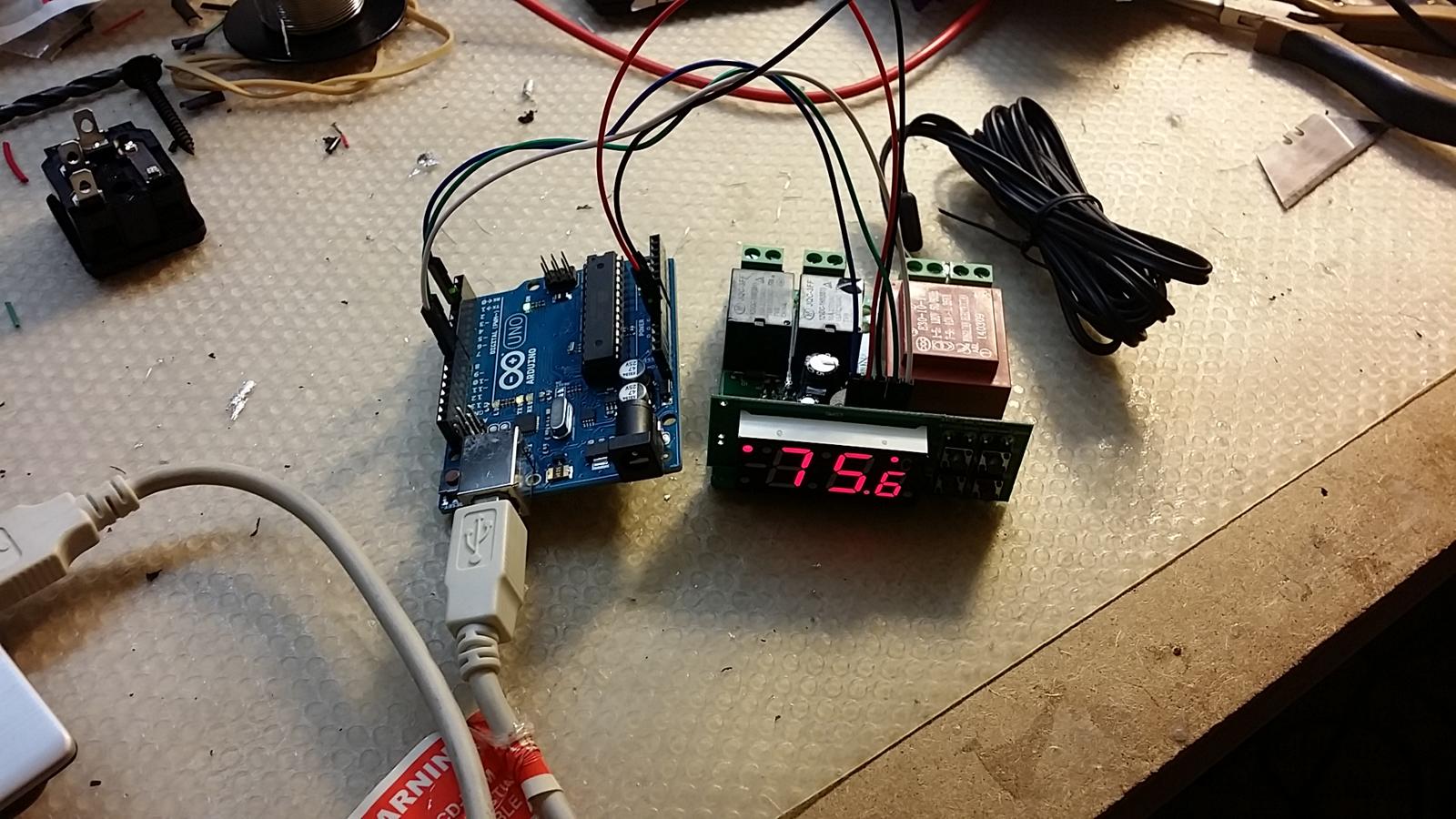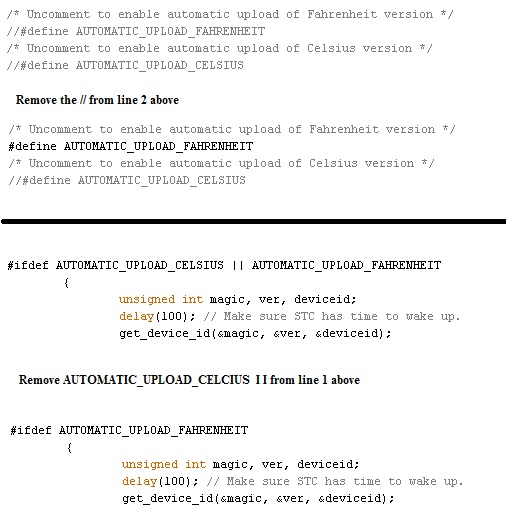I finally had some time to work on my datalogger project for the STC.
It is far from finished, but this will be sweet

It is a pretty simple deal actually, an arduino pro mini that is hooked up to the relevant lines of the STC. If you remember my fermentation fridge setup
in this post, I have separated the display from the main board and connect them via a cable instead. The logger will simply plug into this cable.
For development, I have also modified my dev board in a simpler way, that is probably a more reasonable way to go if you are interested in doing this yourself.
So this is my dev board with the needed 'upgrade'.
This is the protoboard I use. An arduino pro mini, mini SD card module and a light gate (this is optional, I want to count bubbles in the air lock as well).
The bottom of the board. Connector for the cable and I also added a pushbutton.
The protoboard fits in an encosure.
Top of the enclosure.
The way I have chosen to implement this is pretty clever I think.
First off, I have chosen to maintain the connections from the programming sketch, so I can upload it and reflash the STC with the same hardware.
When using it as a logger, the temp probe outputs are connected to analog input pins and read the same voltage as the STC and the exact same method is used to convert the reading to a temperature. On my dev board this seems to differ 0.2 deg C from the STC, but it seems to be pretty consistently off by this, so it would be pretty easy to correct for.
I'll also log heating and cooling (and bubble count).
So far I have only gotten proof of concept working. I need to 'polish' the logging sketch a bit, but I'm pretty amazed myself at how easy this was

I'll probably put this project up on the github page when I feel it is good enough to share.
Cheers!
//mats















































![Craft A Brew - Safale BE-256 Yeast - Fermentis - Belgian Ale Dry Yeast - For Belgian & Strong Ales - Ingredients for Home Brewing - Beer Making Supplies - [3 Pack]](https://m.media-amazon.com/images/I/51bcKEwQmWL._SL500_.jpg)

















